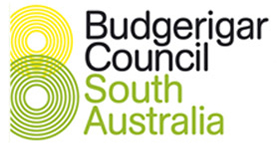
Budgerigar Egg Hatching
Breeding budgerigars is a great hobby, but it can also be challenging. One of the most significant challenges is getting eggs to hatch. Unfortunately, there are many problems that can occur during the hatching process, leading to failed or underdeveloped embryos. In this article, we will discuss some of the common problems with budgerigar eggs hatching and what you can do to prevent them.
Infertile Eggs
 One of the most common problems with budgerigar eggs hatching is infertility. Infertile eggs will not hatch, and there is nothing you can do to change this, as the egg has not been filled. However, you can prevent infertility by ensuring that the female budgerigar is healthy and in good condition before breeding, and that the pair is well bonded and in breeding condition. A balanced diet, proper lighting, and a stress-free environment are crucial for ensuring fertile eggs.
One of the most common problems with budgerigar eggs hatching is infertility. Infertile eggs will not hatch, and there is nothing you can do to change this, as the egg has not been filled. However, you can prevent infertility by ensuring that the female budgerigar is healthy and in good condition before breeding, and that the pair is well bonded and in breeding condition. A balanced diet, proper lighting, and a stress-free environment are crucial for ensuring fertile eggs.
Poor Incubation Conditions
Another common problem with eggs hatching is poor incubation conditions. If the temperature or humidity level is too high or too low, the embryo inside the egg may not develop correctly. To prevent this, it’s essential to monitor the incubation conditions carefully.
Contaminated Nesting Materials
Contaminated nesting materials can be a significant problem for budgerigar eggs hatching. Budgerigars are sensitive birds, and their eggs can be easily affected by bacterial or fungal infections, which can lead to the failure of the eggs to hatch or to the death of the chicks. Eggs are porous in nature. As a result, nesting materials, such as Critters Comfort, wood shavings, straw, or hay, can become contaminated with bacteria or fungi from faeces, food, or other sources. When a female budgerigar lays her eggs in these materials, the eggs can become infected, which can affect the development of the embryo inside.
To prevent contaminated nesting materials from affecting budgerigar eggs hatching, it’s crucial to provide clean and fresh nesting materials regularly. Also, it’s essential to keep the nesting area clean and free of debris, faeces, and uneaten food, which can attract bacteria. Regularly cleaning and disinfecting the nesting area can also help prevent the buildup of harmful bacteria and fungi.
Chick Mortality
Even if the budgerigar eggs hatch, there is still a risk of chick mortality. This can be caused by a variety of factors, including genetic defects, illness, or environmental factors. To prevent chick mortality, it’s essential to provide a clean, warm environment for the chicks.
Conclusion
Breeding budgerigars can be a fun experience, but you need to be aware of the potential problems with egg hatching. Infertile eggs, poor incubation conditions, contaminated nesting materials, and chick mortality are all common problems that can occur. However, with proper care and management, these problems can often be reduced. If you’re new to breeding budgies, it’s a good idea to consult with an experienced breeder or vet for advice.
